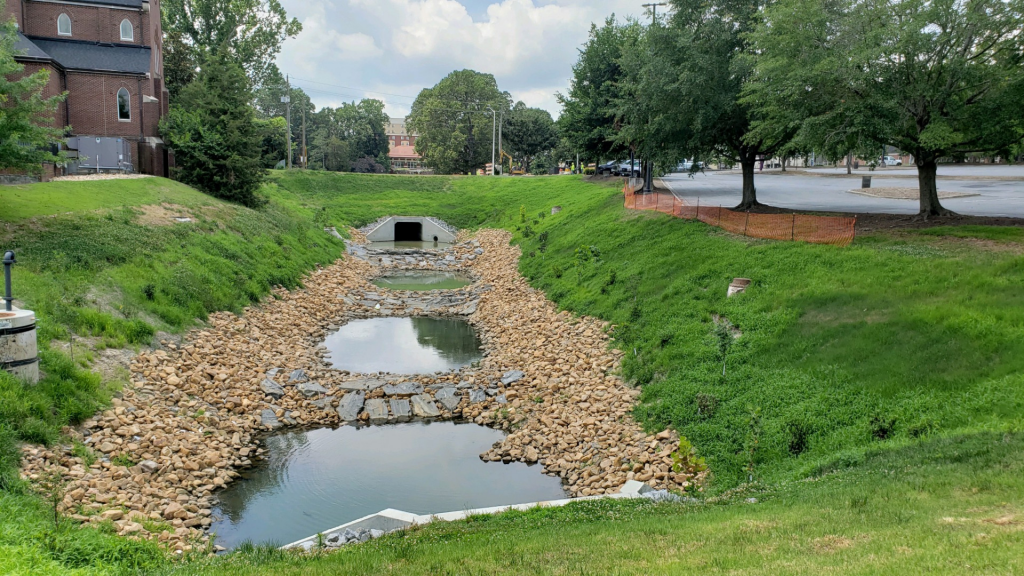
The Clean Water State Revolving Fund (CWSRF) program was created over 20 years ago through amendments to the Clean Water Act. The CWSRF provides low interest loans to local government units for water quality-related projects. Each year, a portion of the funds are allocated to a “Green Project Reserve” that further reduces the interest rate of “green” projects, such as stormwater control measures (SCMs). In North Carolina, the program is run through the North Carolina Division of Water Infrastructure (DWI), a division within the Department of Environmental Quality.
The CWSRF has been very popular in North Carolina, funding countless wastewater projects across the state. Nevertheless, the uptake of the CWSRF and the Green Project Reserve for green infrastructure in North Carolina has been relatively slow and usually on a smaller funding scale.
One project stands in contrast to that generalization: the City of Greenville’s (NC) urban stormwater project, otherwise known as the Town Creek Culvert Project, which was completed in October of 2020. As the uptown district developed, the need to address urban stormwater concerns drove a more innovative approach which involved multiple green infrastructure components, including a regenerative stormwater conveyance system. As a result of these green stormwater infrastructure components, the project was eligible for funding through the CWSRF and Green Project Reserve. In total, the project included a mix of gray and green infrastructure designed to increase the level of service in the uptown district from a two-year storm event (50% annual storm event probability) to a 25-year storm event (4% annual storm event probability). The project, though long and complicated, remains the largest stormwater project funded by the NC CWSRF.
Recognizing the opportunity to learn from this project, the EFC conducted a case study of the Town Creek Culvert project in the spring/summer of 2021. This case study gathered information on the project from City of Greenville archives, interviews with NC DWI, and feedback from the City of Greenville and WK Dickson (the engineering firm involved with the project). Together, this information formed a narrative describing the project and list of lessons learned for local governments that might be considering using CWSRF funds for green stormwater infrastructure. The case study, which can be found at this link, attempts to detail both the “highs” and the “lows” of the project and encourages uptake of the CWSRF for these green projects.
The project, like many urban stormwater projects, was not without its challenges. However, it is a great example of how the CWSRF and Green Project Reserve can be utilized for green stormwater infrastructure and to leverage support from community partners. The case study serves as a starting point for local governments that might be considering using the CWSRF for green stormwater infrastructure. To date, the wastewater needs in the state have driven the appetite for wastewater-specific project funds, but as NC continues to urbanize, there is a possibility that the CWSRF will receive a greater number of green stormwater-related project applications in the future. Keep reading and learn more about Greenville’s Town Creek Culvert project.
For more information, visit NC DWI’s CWSRF website by clicking here.


One Response to “Getting Green for Going Green: Using the CWSRF for Urban Stormwater Projects”
Sara
Thanks for sharing the insights, the projects is definitely solving a lot of problems.